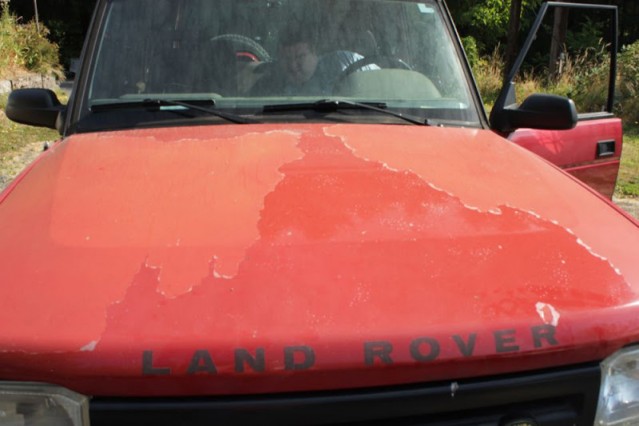Some time in the late 1970s / early 1980s, there was a revolution in the shadowy world of automotive paintwork. Metallic paints were all of a sudden in vogue in Europe, and everyone needed the latest and greatest metallic brown and orange finishes on their cars (cf. the 1981 Triumph TR7 colour book). Unfortunately, British Leyland et all soon figured out that metallic paint looks terrible when sprayed by robots built in Birmingham, so the industry investigated ways around this.
What the paint people collectively came up with was “clearcoat” – essentially, a veneer that is added after the colour coat to protect, give gloss, and cover up mistakes. This was not a new idea, but it was rather expensive to implement. This meant two things – one, it only initially appeared on high-end Japanese and European cars.. and two, when it made it to mass-market British (and yes, Jap) vehicles, cost-cutting meant the benefits of the fancy new process were, uh, diluted somewhat.
Fast forward to 2013; it’s now fairly rare to see an ’80s Accord or old Nissan without the characteristic flaky roof or bonnet.. and while this is obviously a far worse phenomenon in hotter climates, practically every Civic in Canada suffered the same fate.
However, quality control fixed most of the problems over time, and by the 1990s automotive paint processes were much improved………..
….except in Birmingham:
This is a 1994 Land Rover Discovery. It’s spent its entire life in the Pacific Northwest – where there is no sun – and the bonnet and roof are a spectacular mess of flaking clearcoat and faded colour coat. I kinda feel sorry for it – it’s not like the Discovery doesn’t have enough other problems. It’s the opposite of a ghost flame job in a certain light.. whereas in actual daylight it just looks terrible.

0 Comments